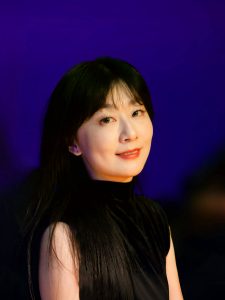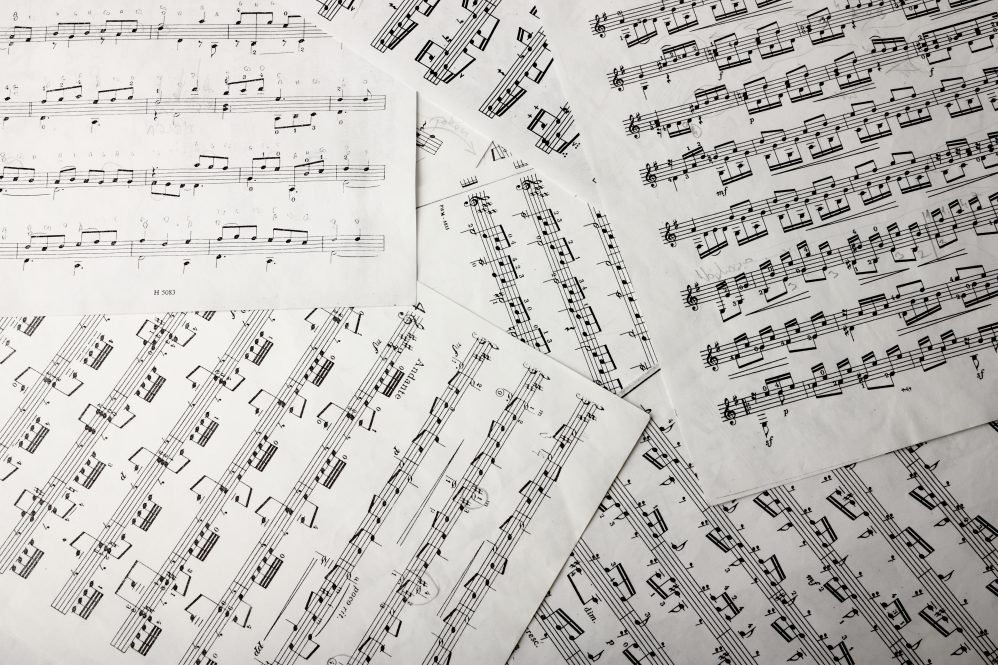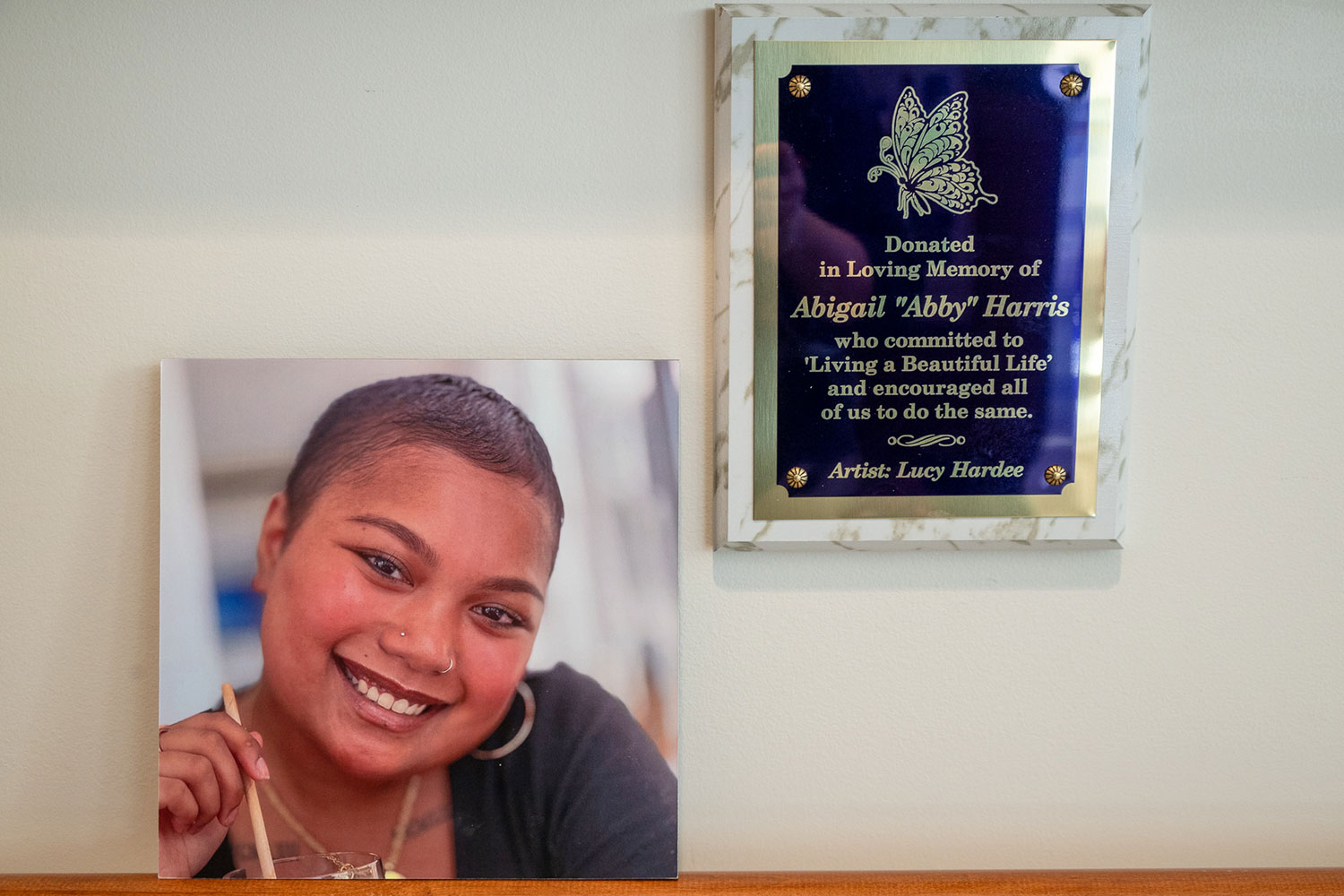Janet Song Kim leans back in their chair, sweatshirt draped over their shoulders, and questions what’s just been asked of them.
“What do you mean by ‘quality,’” they query. “In the band world and in music in general, when we talk about new compositions, specifically those by people of color, people always ask the question, ‘Is it quality?’ And I always respond, ‘What do you mean by that?’ It feels like an incomplete question.”
In the last four decades of the 20th century, during the booming years of band music, works from majority population composers, comprising mostly white and mostly male musicians, became the gold-standard for so-called “quality” music, explains Kim, an assistant music professor and director of UConn’s wind bands.
“The concept of quality is changeable just by nature,” Kim says. “What is the quality of your skin? What is the quality of this fabric? What is the quality of this color white – and if it fades into a different color, when does it stop being white and how do you qualify it as being not white anymore? This philosophical conversation about quality and about what constitutes quality music is an interesting one.”

So, when asked about the new music they’re purchasing this year for UConn’s music department Ensemble Library, they might take the opportunity to probe what’s really been asked.
“If we’re choosing this music, it’s because we believe in the merits of it,” Kim says.
With a School of Fine Arts anti-racism grant, Kim has added to the library works from Black composer Henry Dorn, Japanese Canadian composer Cait Nishimura, and Mexican American composer Salvador Jacobo, among other living music makers.
In late November, the Symphonic Band titled its concert Lovely Day, performing composer Kevin Day’s pieces “River Memoria” and “Ecstatic Samba.” The concert came thanks to a partnership between Day and UConn’s Ricardo Brown, an associate professor-in-residence who directs the Symphonic Band.
About two weeks prior, Kim’s Wind Ensemble featured in its concert DANCE, music by composer Giovanni Santos, who was in the audience when the group performed his piece “3 Latin American Dances.” He later joined the group for a second performance in East Hartford Public Schools.
“We’re not just diversifying our library, but we’re also using the grant to bring in these composers to work with our students and then taking them to schools in places like East Hartford and New London,” Kim says. “For young students who don’t have access to this kind of performance, this is a great experience. Failing to expose them to live music just adds to the educational divide in this country.”
In higher education, the push is on at music schools to diversify libraries and introduce composers of different races, ethnicities, and gender, closing a similar divide that’s existed in the music world for generations. It’s something that Kim says would have made a difference for them as a young musician.
“I remember growing up and not ever seeing any composers’ names that looked like my own,” they say. “It’s important for all students to see it’s possible for them to succeed and to see themselves in places of power and success, to see there are composers who look like them.”
After that November concert featuring Santos, Kim says a UConn student approached them with tears in their eyes, saying they’d never seen someone of the same heritage achieve such musical success and hoped they, too, could be an inspiration for Latino musicians.
“Playing music by living composers is really impactful for our students because ensembles are so used to playing music by people we can’t meet,” Kim says. “We meet any composer through the act of music making but meeting them in person, too, is just a magical thing. It’s working with art in real time.”
‘Less famous, no less meaningful’
Pianist JingCi Liu ’24 DMA says there are times when she’s playing a piece and can just tell it was written by a female composer – not always, she says, but sometimes.
“Clara Schumann, for example, wrote her Opus 6 around 16 years old,” Liu explains. “It’s full of different ideas and, frankly, some daring and challenging thoughts in music. With female composers, the style and the way they express musical ideas through different techniques, tonalities, and modulations sometimes deviate from their male contemporaries and you can just feel the beauty in their works.”
Liu says she started playing piano at 4 years old, studying the standard repertoire from Bach, Beethoven, Mozart, Chopin, and others. Now a professional musician with a long list of awards and accolades, she says it’s important for her to step outside tradition and explore what else was happening around the time Haydn wrote his sonatas and Chopin wrote his nocturnes.
As a female musician, if not her then who?
“Portrait of Beauty,” Liu’s debut piano album from KNS Classical, pays tribute to seven female composers, including Schumann, from the classical, romantic, early 20th century, and contemporary styles. Liu says she specifically sought piano works from some who are well-known in music catalogs and some who are rarely played.
It’s a project that started when Liu was studying at the Mannes School of Music at The New School’s College of Performing Arts in New York City and a professor suggested that all artists should seek to explore, study, and honor those who are lesser known.

With that kernel of an idea and in the midst of the pandemic, Liu says she consulted with her two piano teachers – Angelina Gadeliya from UConn and Pavlina Dokovska from Mannes – for advice on how to get started and who best to feature.
She then spent a year meeting virtually with Gadeliya to learn the repertoire, later performing the pieces in various festivals and masterclasses with many renowned artists.
“There’s an online catalog of female composers, and as I looked through it, I started to regret that I hadn’t performed and hadn’t heard of many of these works in a public performance,” Liu says.
Much of the music by female composers even from 200 years ago was preserved, she says – the question is whether it was recognized in the first place. The earliest female composer that Liu found in her research lived during the 9th century.
“Just as Beethoven, Mozart, and Haydn deserve to be performed, music from lesser-known composers, especially female composers, also deserves to be performed,” Liu says. “Their music might be less famous but no less meaningful. In some ways, it shows the historical environment and how the time periods in which they lived affected their ability as musicians and performers.”
Throughout her schooling, Liu says she wasn’t exposed to many of the underperformed composers she’s discovered over the last few years and now that she has, she wants student musicians to learn about them, their body of work, their influences, how they differ from their more famous contemporaries, and the new techniques they used.
People like Marianne von Martinez, Cecile Chaminade, Amy Beach, Nadia and Lili Boulanger, and Caroline Shaw, all featured on “Portrait of Beauty,” have something to offer, Liu says.
And that’s just what Kim aims to do with a better-rounded Ensemble Library at UConn.
“Making music is about reflecting life,” Kim says. “If we only represent one side of humanity, we’re being dishonest about the experience that is human because it comes in so many varieties. If we’re going to share human experiences, we should be including all voices, including compositional ones.”



